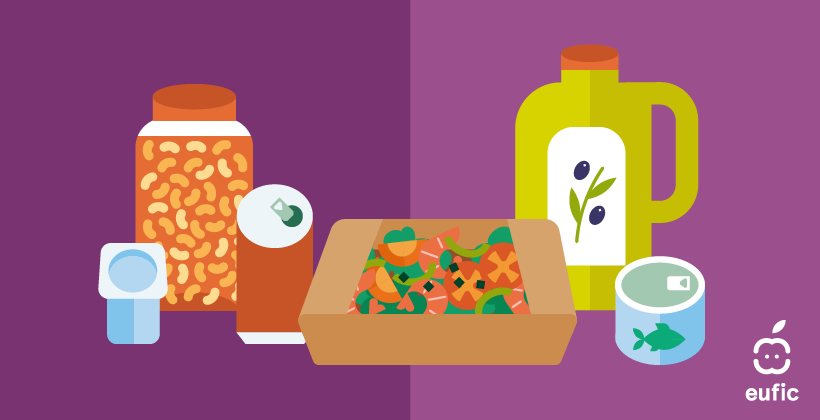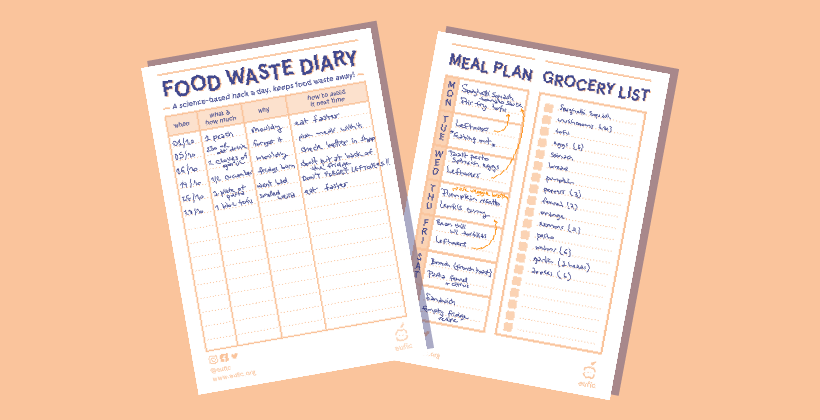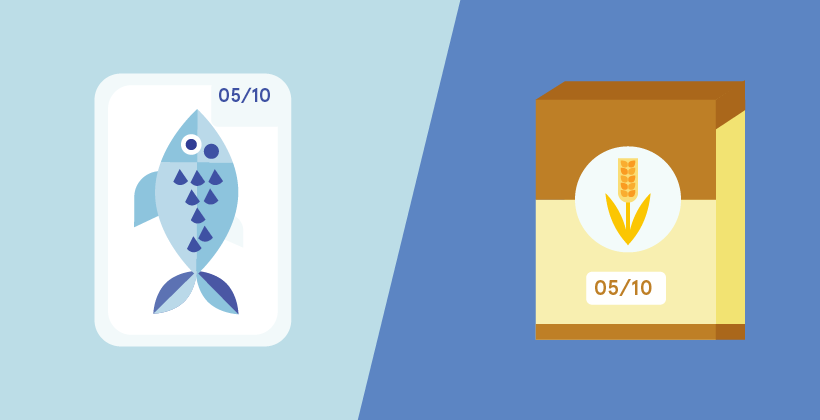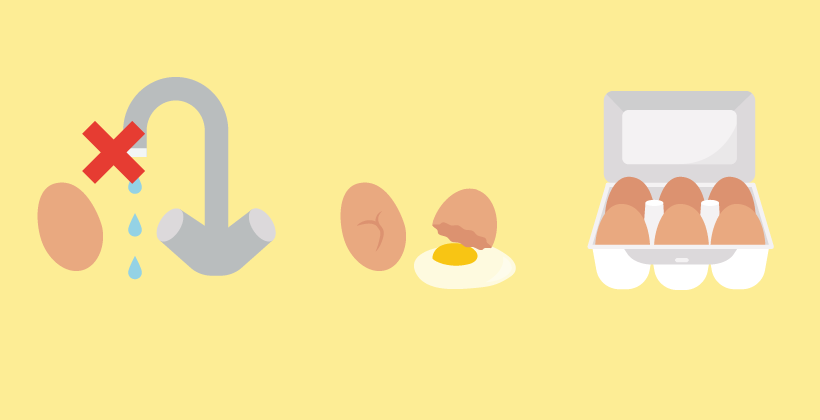What foods should (or not) be stored in the fridge?
Last Updated : 12 September 2021Whether the food comes from your garden, the grocery store or a restaurant, proper handling and storage ensures both the quality and safety. Sometimes it’s not so obvious where a certain food product should be stored to maintain its quality, so here we’ll dig into some of the most commonly misplaced ones and give you some answers to general fridge storage questions.
What temperature should the fridge be?
The fridge should be kept at maximum 4°C, and this should be checked regularly with a thermometer. Avoid packing too much in your fridge and allow space between items so that air can circulate and the refrigerator can function properly.
How should you store food in the fridge?
Some foods, especially raw, contain microbes that may cause illness. Luckily, these microbes are killed during cooking. Since microbe growth is slower at lower temperatures, raw meat, fish and poultry should be stored in sealed containers on the bottom shelf of your fridge, as this is usually the coolest part.1 It’s also important to keep cooked and ready-to-eat foods separated from raw foods and to wipe up spills immediately to stop microbes from spreading in the fridge. Good, general hygiene is important, so the food should be wrapped or in covered containers while storing it, and the fridge should be cleaned frequently.2
Read more about preventing food poisoning here.
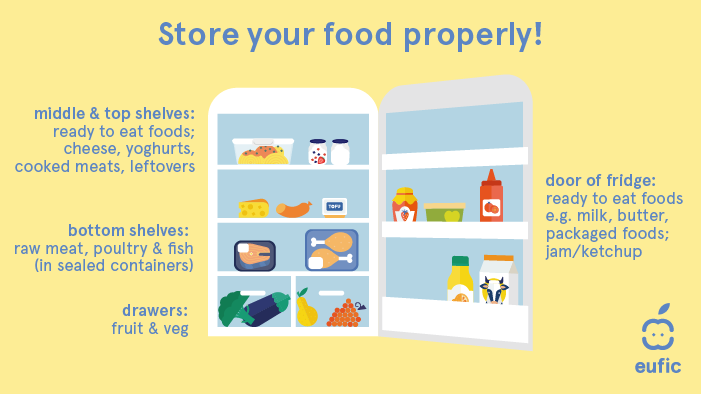
Can you put hot food in the fridge?
No, it’s better to avoid placing hot foods straight into the fridge as this will raise the temperature of the fridge. The raised temperature and condensation give good conditions for microbes to spread. Wait until the food has been cooled down to room temperature.
Remember the ‘2-hour rule’: whether it’s leftover, take-away, or just-bought, it’s important to cool and place foods in the fridge within two hours to avoid microbes from spreading. If you want to cool the food a bit quicker, you can put it in a casserole in cold water. Make sure that the food is not completely covered so that excess heat and water vapour can easily escape. When it’s cooled, it can be placed in an airtight container in the fridge.3
Eat leftovers within 2-3 days. The exception is rice dishes, which should be eaten within 1 day. This is because rice can contain spores that survive cooking and grow into new bacteria, like Bacillus cereus, that produce toxins that can make you sick, if leftovers are not cooled quickly and stored properly.4,5 The longer cooked rice is kept, the more likely it is that the new bacteria or their toxins will make it unsafe to eat.
Which food products should be stored in the fridge?
Some foods provide good conditions for bacteria to grow. These are products that are moist, rich in nutrients and low in acid, especially if they are being stored in temperatures above 4°C.6 This includes foods like meat, fish, cheese, dairy and leftovers. Dry ingredients and foods can be stored at room temperature.
You might have heard the saying “one bad apple spoils the barrel”. This saying is true, as it refers to the ethylene production and sensitivity of different fruits and vegetables. Some fruits and vegetables, like apples but also kiwis, apricots and bananas, produce a high amount of ethylene gas. Ethylene gas is linked to the ripening process of fruits and vegetables. Some fruits and vegetables, for example cabbage, carrots, asparagus and celery, are more sensitive to this gas than others and are therefore considered as 'ethylene sensitive'. To keep the ethylene sensitive fruits and vegetables from spoiling quickly, they should not be stored together with ethylene producing fruits and vegetables.7
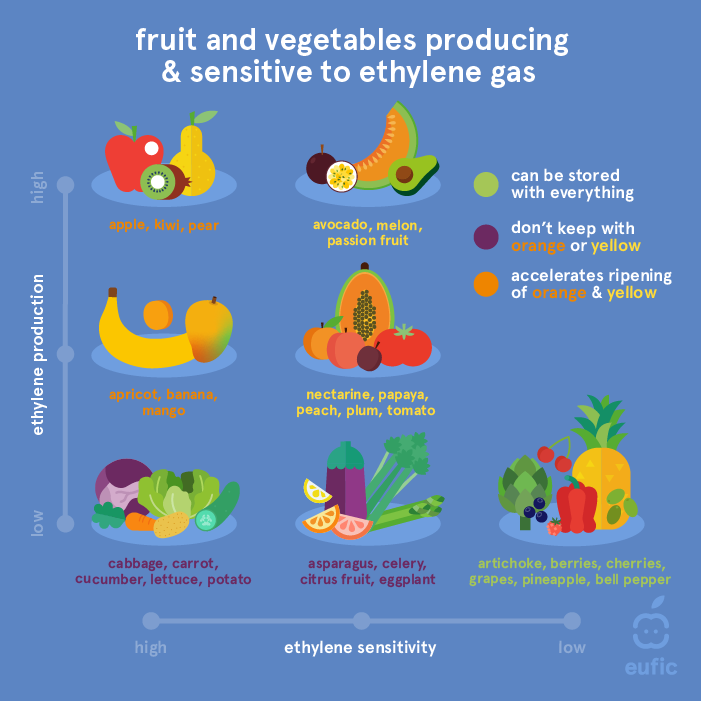
Figure 1: To keep the ethylene sensitive fruits and vegetables from spoiling quickly, they should not be stored together with ethylene producing fruits and vegetables.
The following table provides guidance on some common food products and whether they should be stored in the fridge.6,8
| Type of food | Store in fridge? |
|---|---|
| Avocados | At room temperature until ripe, then in the fridge. |
| Apples | Yes |
| Bananas | No |
| Bread | No |
| Butter | Yes |
| Cheese | Yes |
| Eggs (boiled) | Yes |
| Eggs (unboiled) | Yes |
| Garlic | No |
| Ketchup | Follow instructions on the pack or jar |
| Lemons | Yes |
| Meat (raw or cooked) | Yes |
| Oranges | Yes |
| Mustard | Follow instructions on the pack or jar |
| Onions | No |
| Pickles (opened) | Yes |
| Potatoes | No |
| Soy sauce | Follow instructions on the pack |
| Salad leaves | Yes |
| Tomatoes | Yes |
References
- The Norwegian Food Safety Authority (Mattilsynet) (2018) Kva er riktig temperatur i kjøleskapet?
- Food Safety Authority of Ireland (2020) Home Cooking and Storage.
- The Norwegian Food Safety Authority (Mattilsynet) (2018) Stemmer det at varm mat ikke skal settes i kjøleskapet?
- Rajkovic, A., et al. (2008) Heat resistance of Bacillus cereus emetic toxin, cereulide. Letters in Applied Microbiology, 46(5): p. 536-541.
- Food Safety Authority of Ireland (2016) Factsheet: Bacillus cereus.
- Andress, EL & Harrison, JA. (2011) Food Storage for Safety and Quality. Cooperative Extension - the University of Georgia.
- Food and Agriculture Organization of the United Nations (2019) Say NO to food waste: A guide to reduce household food waste.
- Love Food Hate Waste (2018) A-Z of food storage.
